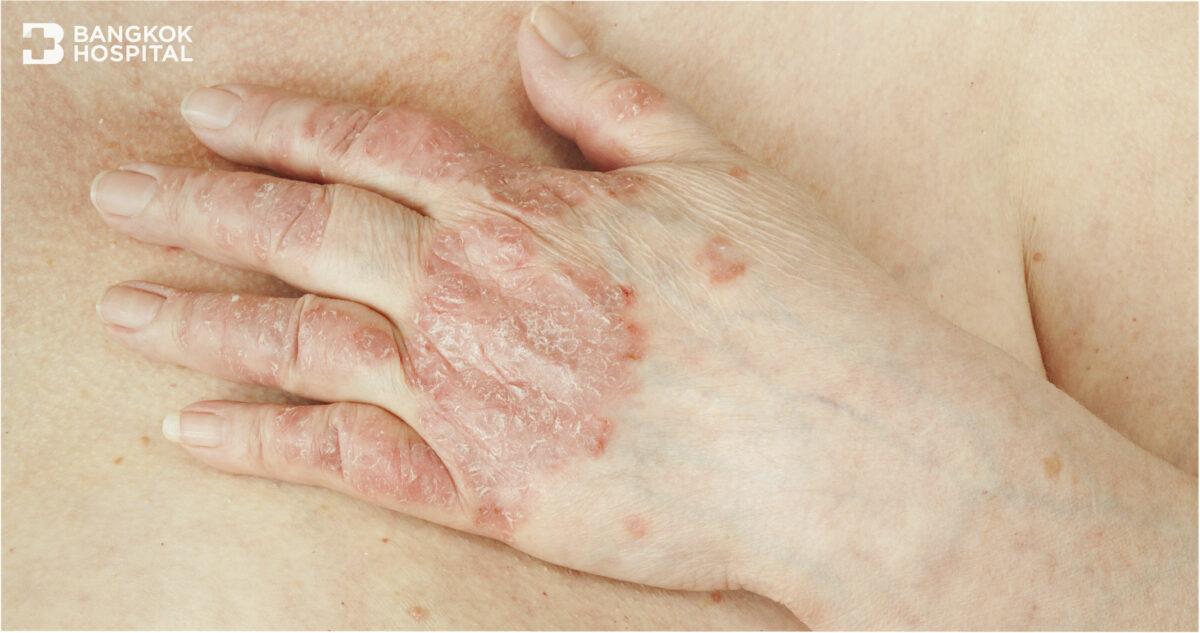Systemic lupus erythematosus (SLE) is a chronic autoimmune disease, characterized by the production of unusual antibodies that can attack
patient’s own tissues and organs. In fact, inflammation caused by SLE can affect many different body systems — including skin, joints, blood cells, brain, kidneys, lungs and heart. The manifestation of multiple organ damages can mutually develop in the same time or different episodes (known as flares). Signs and symptoms may appear suddenly or develop slowly. And they can be mild or severe and may be temporary or permanent. Since the exact causes of SLE remain unknown, therefore it is essential to know and be aware of warning signs indicating SLE, allowing for an early diagnosis and effective treatment in a timely manner.
Get to know SLE
Systemic lupus Erythematosus or SLE is an autoimmune disease in which the immune system of the body mistakenly attacks healthy tissues and organs in the body. As a result, it leads to chronic inflammation of a broad range of systems, extending from skin, joints, blood cells, brain, kidneys, lungs to heart. SLE is more common in women than men, particularly during the reproductive age. SLE results from a combination of genetic abnormalities and exposure to certain environments. People with an inherited predisposition for SLE are at greater risk to develop the disease whereas potential triggers contributing to SLE are infections and ultraviolet light.
When SLE develops, antinuclear antibody (ANA) is produced by immune system. A positive test for the presence of this antibody indicates a stimulated immune system. Thus ANA test is often used as a key diagnostic test for SLE.
Warning signs and symptoms
The signs and symptoms depend on which body systems are affected by the disease which might widely vary among individuals. The most common signs and symptoms include:
- Joint pain, stiffness and swelling
- Low-grade to high-grade fever
- Fatigue
- Loss of appetite
- Butterfly-shaped rash on the face covering the cheeks and bridge of the nose or rashes elsewhere on the body, e.g. arm and leg.
- Hair loss (non-scarring alopecia)
Blood-related problems, e.g. low red blood cell count (anemia), low white blood cell count (neutropenia) and low platelet cell count (thrombocytopenia). Serious complications that may arise are red blood cell lysis, lung inflammation (pneumonitis) and kidney inflammation (nephritis).
Diagnosis
Diagnosing SLE is challenging since signs and symptoms vary considerably from person to person. Signs and symptoms may alter over time and overlap with other disorders. Therefore, an accurate diagnosis requires the expertise of specialist who is highly trained and experienced in autoimmune disorders.
The combination of medical history, physical examination findings, signs and symptoms, blood and urine tests as well as imaging tests, e.g. chest X-ray and echocardiography leads to the confirmative diagnosis of SLE.
Treatments
Since SLE is a chronic condition, it needs continuous treatments and monitoring. Effective treatments allow for the achievement of a low disease activity or remission status. Considering disease manifestation substantially varies from person to person, customized treatment plan depends on symptoms and disease severity as well as overall health condition of each patient. As signs and symptoms flare and subside, the specialist may need to adjust medications or dosages. In some severe cases in which multiple organs are affected collectively, corticosteroids, nonsteroidal anti-inflammatory drugs (NSAIDs) and immunosuppressive drugs may be prescribed.
Patient instructions
These following instructions help to prevent SLE flares:
- Maintain good sleep hygiene
- Avoid exposure to sunlight during midday.
- Consume clean and properly cooked foods to avoid infections
- Exercise regularly depending on your health condition.
- Take all medications strictly as prescribed. Self-adjustment of medications is not recommended. Any questions regarding your condition should be directed to your treating physicians who are aware of your condition.
- See the specialist regularly and complete all follow-up appointments.
Despite the fact that SLE is a chronic autoimmune disease in which genetics and environment play an important role, early diagnosis and effective treatments enable the patients to control their disease and resume daily lives with improved quality of life.









